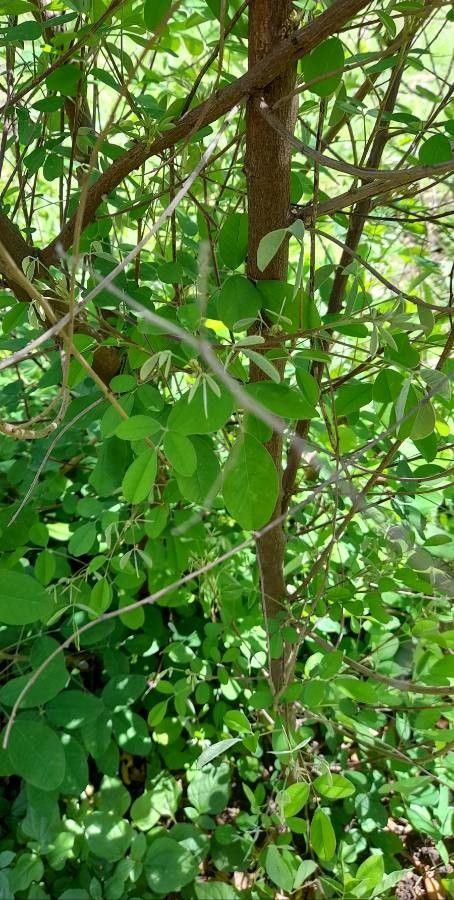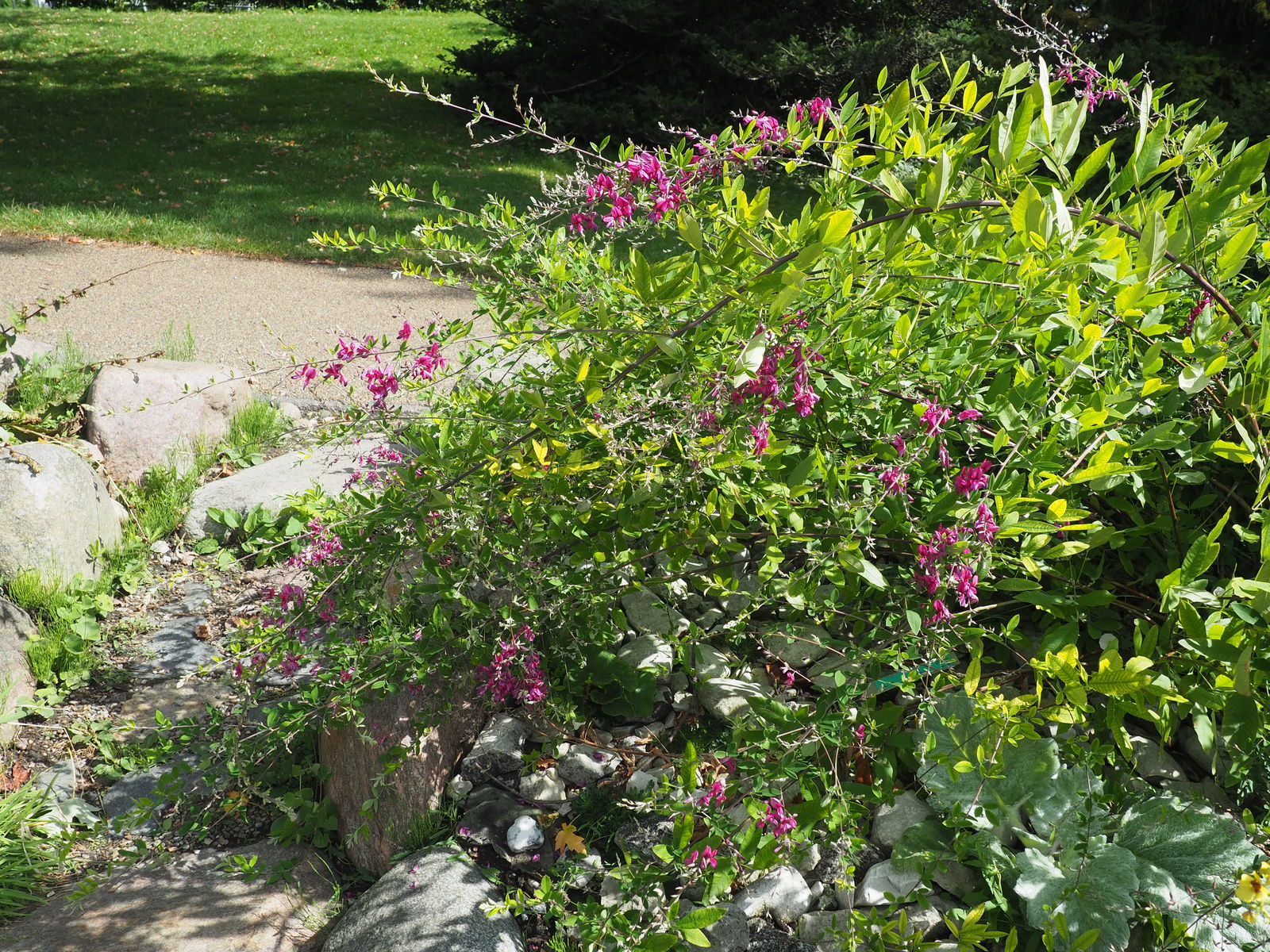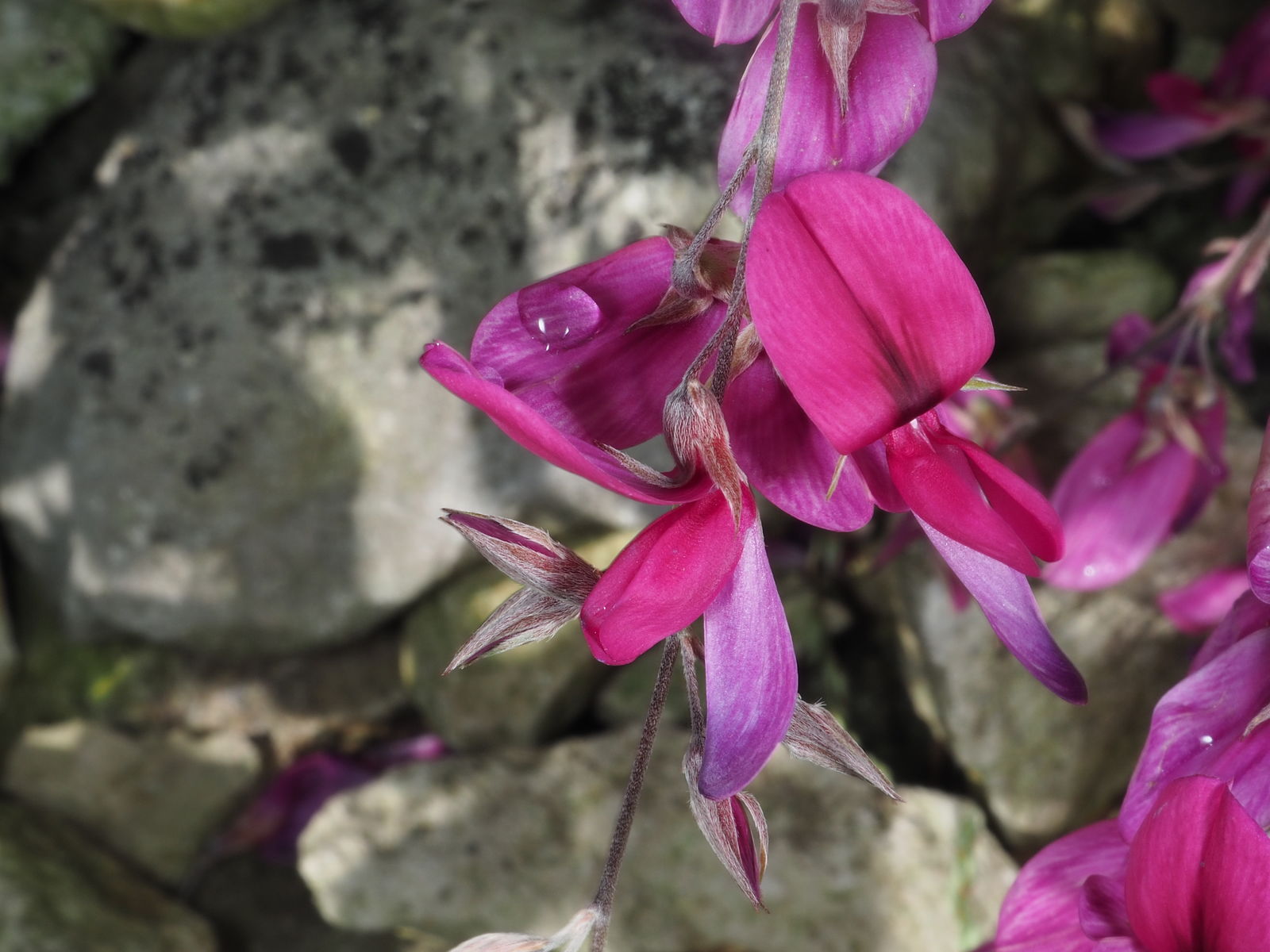Bush Clover
lespedeza thunbergii
Also known as: ["Bush Clover","Thunberg's Lespedeza"]
Overview
A deciduous shrub known for its arching stems and late-season racemes of pinkish-purple flowers.
Benefits & Perks
["long-flowering","wildlife attractant (bees, butterflies, birds)"]
Botanical Classification
| Phylum: | Magnoliophyta |
| Class: | Magnoliopsida |
| Order: | Fabales |
| Family: | Fabaceae |
| Genus: | Lespedeza |
| Botanical Name: | Lespedeza thunbergii |
Plant Characteristics
Basic Information
- Category: Shrubs
- Suitable Location: garden border, shrubbery, or as a specimen plant
- Suitable For:
- Is Weed: No
- Allergenicity: low
Environmental Needs
- Climate: {"temperatureRange":"–15–35°C"}
- Hardiness: {"zones":"5–9"}
- Misting: rarely required, only if ambient humidity is very low
- Drainage: Fast-draining to prevent root rot.
- Soil Type: Well-draining, loamy soil with organic matter; tolerates poor soils but thrives with added compost.
Maintenance Level
- Maintenance Level: moderate
- Toughness Level: moderate
- Pruning Frequency: Annually, after flowering; light pruning can be done as needed throughout the growing season.
- Pruning Intensity: Moderate; remove up to one-third of the oldest stems each year to rejuvenate the plant.
Care Details
Ideal Sunlight Coverage:
Full sun to partial shade; 6–8 hours of direct sunlight per day, with some afternoon shade in hot climates.
Sunlight Tolerance Tips:
Acclimate plants gradually to full sun if moved from shade; protect from intense midday sun to prevent scorching; adjust placement based on seasonal light changes.
Care Requirements
Care Difficulty
moderatemoderate
Sunlight
full sun to partial shade
Morning sun is ideal; provide shade during peak summer heat; rotate plants for even light exposure.
Watering
every 7–10 days during growing season, reduce in winter
Water thoroughly but infrequently to encourage deep roots; avoid waterlogging; ensure soil dries slightly between waterings.
Soil
well-drained, loamy soil with moderate fertility
pH: Slightly acidic to neutral (pH 6.0–7.0).
Ensure good drainage; amend with organic matter; avoid compacted soil.
Temperature
Hardy in USDA zones 5–9; prefers temperatures between 60–75°F (15–24°C); tolerates mild frosts but may struggle in extreme heat.
Monitor temperature extremes; adjust watering and shading accordingly; protect from sudden temperature fluctuations.
Fertilizing
every 4–6 weeks during spring and summer
Fertilize lightly; apply before new growth emerges; water after fertilizing to distribute nutrients.
Propagation
Methods
Softwood or semi-hardwood cuttings; layering can also be effective.
Step-by-Step Propagation Guide
- Take 4–6 inch cuttings.
- Remove lower leaves.
- Dip in rooting hormone.
- Plant in medium.
- Keep moist and warm.
Best Time: Late spring to early summer when new growth is firm but not woody.
Environment
Warm, humid environment with indirect light; maintain consistent moisture and warmth.
Medium
Well-draining potting mix with perlite or sand; peat can help retain moisture.
Hormone
Rooting hormone is recommended to improve success rates.
Timeline
Roots typically develop in 4–8 weeks; plants may take a full growing season to establish.
Tools Needed
Pruners, rooting hormone, pots, well-draining medium, plastic wrap or propagator.
Quick Tips
Use clean tools; maintain high humidity; avoid direct sunlight; check for root development after 4 weeks.
Pruning & Repotting
Pruning Guide
Method
Selective thinning of stems; heading back to encourage bushier growth; remove crossing or crowded branches.
Pruning Plan
Prune to control size, shape, and encourage flowering; remove dead or weak growth to improve plant health.
Tools
Pruning shears, loppers, gloves, disinfectant for tools.
Checklist
Disinfect tools; prune after flowering; remove dead or diseased wood; shape the plant evenly.
Repotting Guide
Best Season
Early spring before new growth begins; avoid repotting during flowering or dormancy.
Pot Size
Increase pot size by 2–3 inches in diameter; ensure good drainage holes.
Method
Remove plant gently; trim roots if necessary; place in a slightly larger pot with fresh, well-draining soil; water thoroughly after repotting.
Suggestions
Repot every 2–3 years or when roots fill the container; beneficial for container-grown plants to refresh soil and provide space.
Checklist
Choose appropriate pot size; prepare fresh soil mix; handle roots carefully; water after repotting; place in appropriate light.
Advanced Care Tips
Watering Mastery
Watering Checklist
Check soil moisture before watering; water deeply; ensure drainage; avoid overhead watering.
How to Apply Water Properly
Water at the base of the plant, ensuring moisture reaches the root zone; water early in the morning to minimize evaporation; allow excess water to drain away.
Watering Schedule Tips
Water deeply once a week during active growth, reducing frequency in winter; adjust based on rainfall and soil moisture.
Soil Improvement
Add compost or well-rotted manure to enhance fertility and structure; incorporate perlite or sand for drainage.
Temperature Stress Management
Signs of Temperature Issues
Leaf scorch or wilting in excessive heat; leaf drop or stunted growth in prolonged cold.
Cold Stress
Low temperatures can slow growth and cause leaf drop; severe frost may damage tender shoots.
Solution: Mulch around the base to insulate roots; protect from harsh winds; move potted plants to a sheltered location if temperatures drop below freezing.
Hot Stress
Excessive heat can lead to wilting, leaf scorch, and reduced flowering.
Solution: Provide afternoon shade; increase watering frequency; use mulch to retain soil moisture; mist foliage during extreme heat.
Fertilizing Guide
Fertilizing Checklist
Use balanced fertilizer; apply in early spring; water after application; avoid late-season fertilizing.
Fertilizing Method
Use a balanced, slow-release fertilizer in early spring; avoid over-fertilizing, as Lespedeza is not heavy feeder; reduce or stop fertilizing in late summer to prepare for dormancy.
Common Problems & Solutions
Toxicity Warning
Cats
Non-toxicLespedeza thunbergii is not considered toxic to cats. The plant does not produce compounds that are known to be harmful to felines upon ingestion or contact.
⚡ Toxic If:
Generally non-toxic to cats
Dogs
Non-toxicLespedeza thunbergii is not considered toxic to dogs. The plant does not contain known substances that would cause toxicity in canines when ingested or contacted.
⚡ Toxic If:
Generally non-toxic to dogs
Humans
Non-toxicLespedeza thunbergii is not considered toxic to humans under normal circumstances. The plant does not produce known toxic compounds that would cause adverse effects upon ingestion or contact.
⚡ Toxic If:
Generally non-toxic to humans
Frequently Asked Questions
Q: How tall does Lespedeza thunbergii grow?
A: It typically reaches 6–10 feet in height and spread.
Q: Does it require full sun?
A: Yes, it thrives in full sun to partial shade.
Q: Is it drought-tolerant?
A: It has moderate drought tolerance once established.
Quick Reference
| Family: | Fabaceae |
| Care: | moderate |
| Light: | full sun to partial shade |
| Water: | every 7–10 days during growi |
Get Expert Care Tips
Download the Plantious app for personalized care reminders and plant identification!
Google Play App Store








